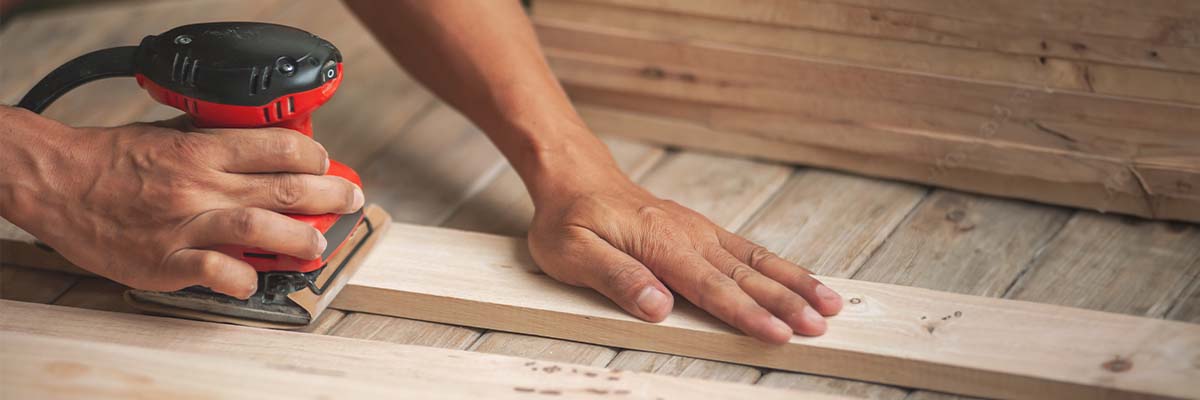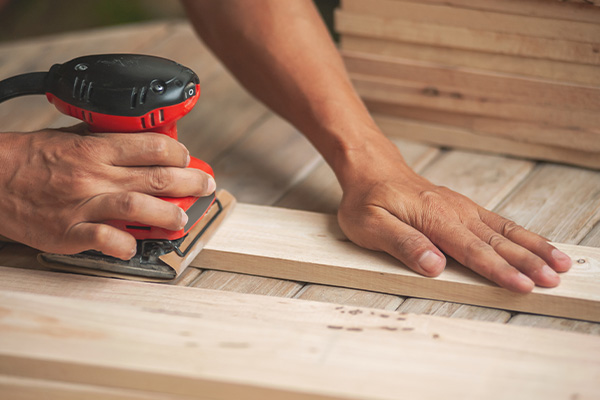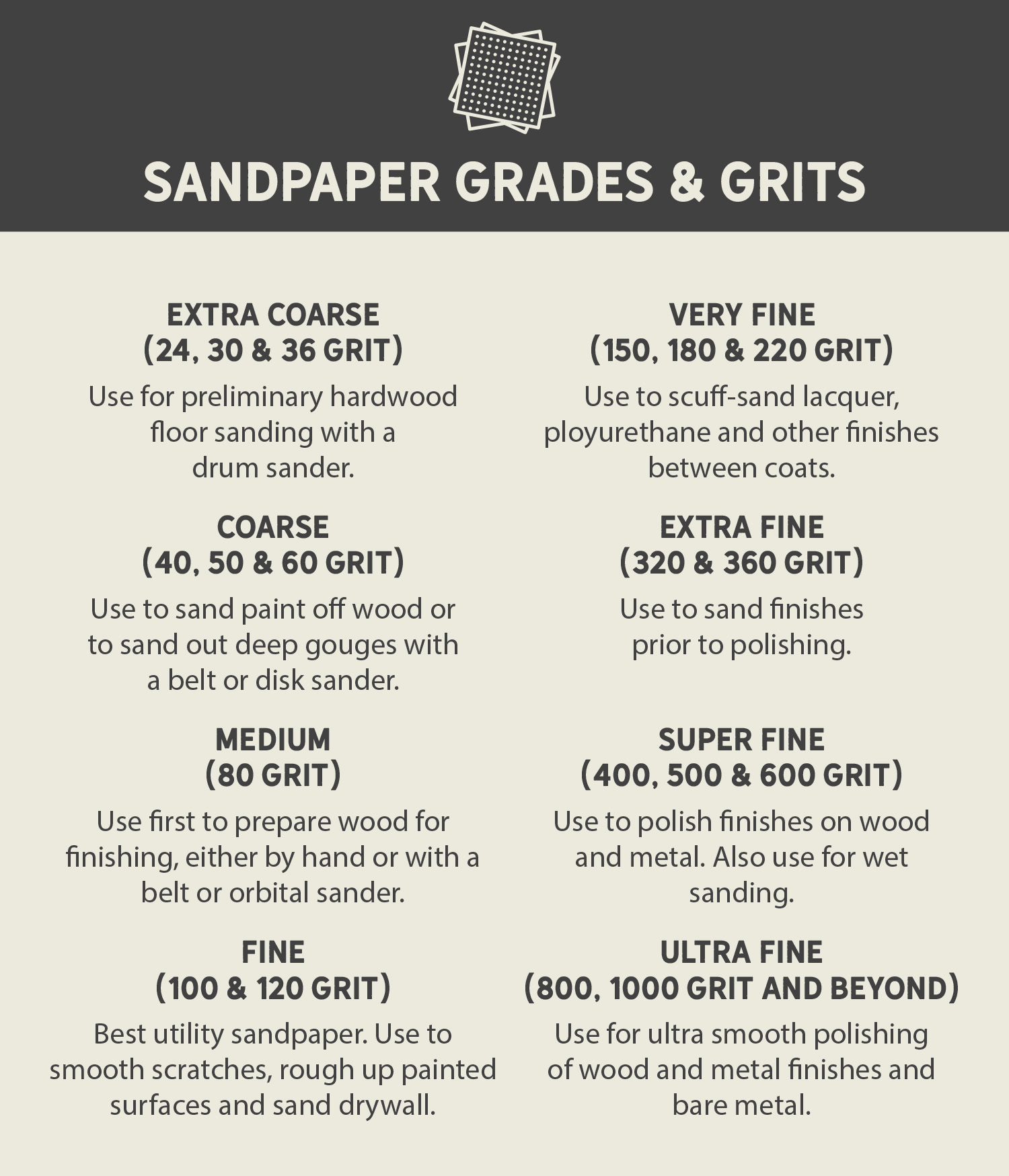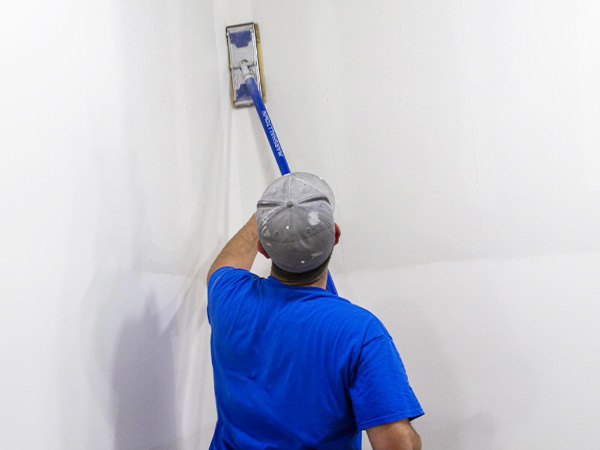

True Grit: Why Sandpaper Is a Real Hero
Sandpaper is handy for making surfaces smooth, removing a layer of paint from an old piece of wood or even metal, or getting rid of rust before it causes damage. You might use sandpaper to properly prep walls before painting, or even to delicately remove imperfections of paint between coats. When you use sandpaper correctly, it can be the best way to achieve a professional look on any project.
Just What IS Sandpaper?
Sandpaper is pretty much what it sounds like. It’s a flat material (often a type of paper) with an abrasive surface on one side. By choosing the coarseness of the abrasive substance, you can start or finish a project with a nice bit of sandpaper. For example, you can use the coarsest grade of sandpaper with a professional sanding machine to remove the existing surface on a hardwood floor you plan to refinish. With the finest grade of sandpaper, however, you could polish metal or wood as a final touch. Or you can utilize several types of sandpaper in descending grades to gradually work some magic.

What is Grit, Anyway?
Sandpaper’s “grit” number is a reference to the fineness or coarseness of its abrasive substance. The levels of coarseness are rated by two different professional organizations, the Coated Abrasive Manufacturers Institute (CAMI) and the Federation of European Producers of Abrasives (FEPA). They have each created numbered systems corresponding to the size of the particles (though the FEPA scale begins with P, then a number). You're likely to encounter CAMI-rated sandpaper at US-based stores like your local McCoy's.
When you’re looking at sandpaper to use for a project, no matter what system your paper is graded by, the smaller the number, the courser the grit size, and the higher the number, the finer the grit. Sandpaper ranges from ultra fine to extra coarse.
Think of it this way: If you had to fit 40 pieces of sand on a 9x11” piece of paper, they’d have to be really large! But if you needed to fit 1,600 pieces of sand on that same piece of paper, they would need to be really tiny.

What is Sandpaper Made Of?
Sandpaper isn’t made of sand and paper, but it’s close! Sandpaper comes with a variety of abrasives, depending on the manufacturer and it’s intended use. It can be covered in natural materials each suited to different projects.
- Garnet: Used in woodworking or fine sanding, and slightly softer than emery or flint. Can become dull quickly.
- Flint: Durable and often used for removing varnish or paint from surfaces.
- Emery: Often too sharp for use on wood, but often utilized to polish metal.
Sandpaper can also be made from synthetic materials.
- Aluminum oxide: Great all-purpose sanding material for hardwood or metal.
- Silicon carbide: Typically used in wet-sanding operations, but extremely durable and ideal for soft or hardwoods as well as plastic or metal.
- Ceramic: Is used with commercial applications, such as drywall sanding, and known for its ability to remove materials quickly and evenly. Bonus-- it’s reusable after a quick wash or vacuuming off.
- Zirconia alumina: Helpful for removing burrs on metal or initial sanding of rough wood.

Sanding Tools to Save Your Fingers

While we might imagine sandpaper always in its “sheet” form—almost universally 9x11” in size—it comes in many different sizes and shapes for use in small or very large applications.
- Sanding block: The key to sanding a large surface well is even pressure, and a sanding block allows you to do just that. A rectangular block held in the hand; a sanding block allows for slow, careful progress that can take a thin veneer away carefully. This option requires no electricity.
- Palm: A small mechanical tool with circular sandpaper pads, a palm sander is great for use on cabinet doors and shelves, and other wood that won’t require staining, or that requires a delicate touch.
- Orbital: To remove more material with greater power, an electric orbital sander is often the right choice over a palm sander. They are also larger than palm sanders and can tackle bigger projects with greater speed.
- Detail: With a shape like a small clothes iron, an electric detail sander has a wedge-shaped sanding pad that allows it easy access to corners, crevices, and other small spaces, such as on furniture or even stairs and other tight spaces.
- Belt: With a helpful linear pattern, you can use an electric belt sander to move in long, straight paths to easily sand with the grain of wood on projects including laminate countertop refinishing or when you’ve got a big stack of rough wood you need to smooth.
- Disc: Commonly found in woodworking, a disc sander has a small platform attached to a spinning disc-shaped sander. You move the material to it, not it to the material.
- Pole: Great for reaching a large area of wall, ceiling, or floor without breaking your back, a pole sander can be helpful when you need to smooth a large area. The power here comes from you (not electricity).
- Paper: Typically, 9x11” sheets, this is original and paper-backed sandpaper. These are great to have on hand for the odd finishing touch, but you should consider an upgrade when tackling a large room’s worth of sanding to do’s.
A Quick Sanding Hack
To make a board as flat as possible, you'll need to sand evenly. Start by drawing pencil marks all over the board with medium pressure, then sand and watch as the pencil marks disappear. That way you'll know where you've sanded and where you still need to sand more. To get a truly smooth surface, start with a low grit and move your way up to a high grit sandpaper.
Make it Go Smoother with Help from McCoy's
Whether it’s a few sheets of sandpaper or a load of lumber, the experts at McCoy’s can help you smooth things out for your next project, so it’s not too gritty a task. From the coarsest, most weathered old fencepost you've ever tackled, to achieving the smoothest tabletop you've ever seen, we've got you covered.
